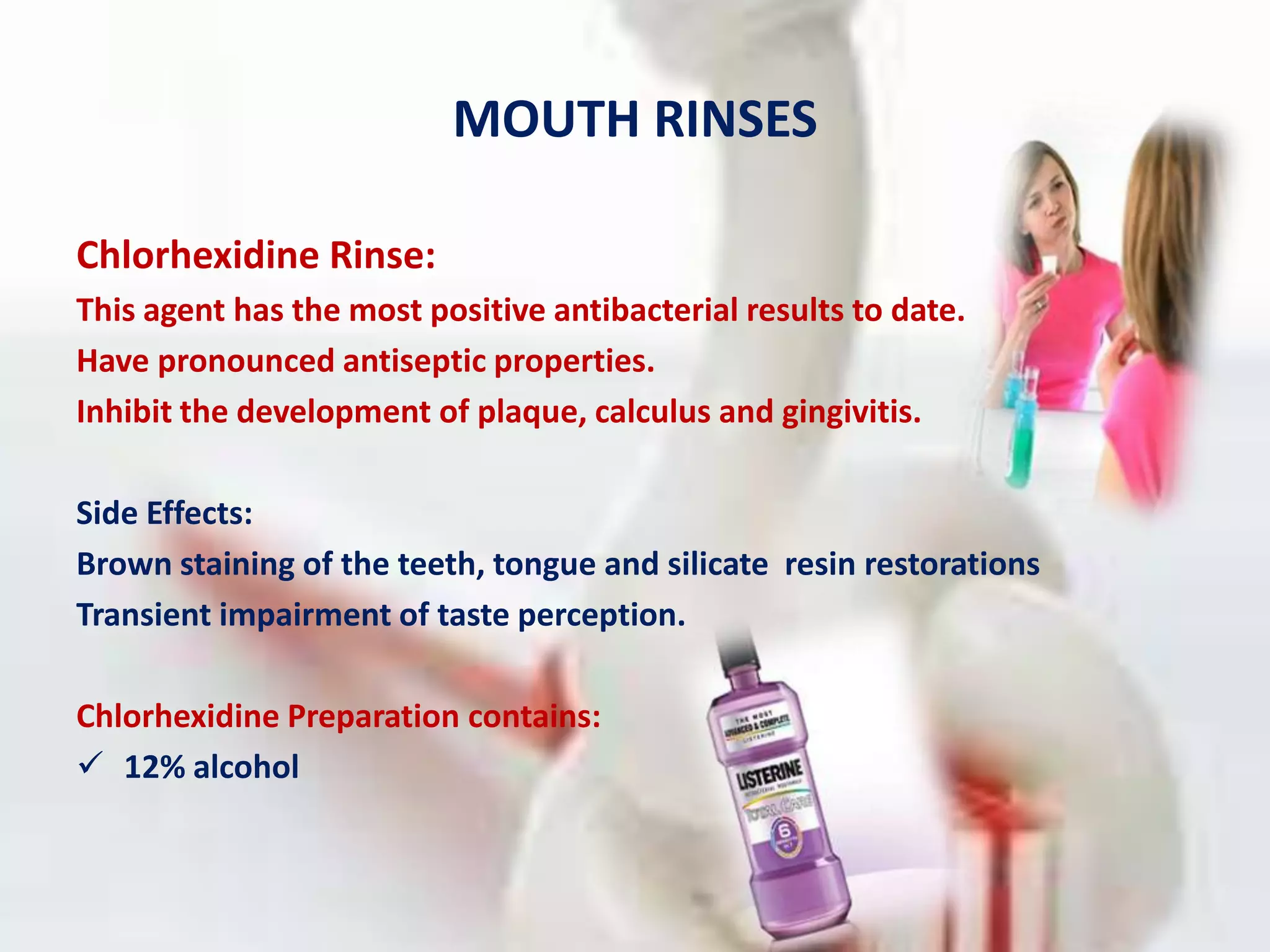The document discusses plaque and its control, explaining that plaque is a biofilm of bacteria that adheres to teeth and can lead to periodontal disease and dental caries. It emphasizes the importance of patient cooperation in daily plaque removal through mechanical methods like brushing and flossing, as well as chemical agents found in toothpaste and mouth rinses. Different types of toothpaste are outlined, each serving specific purposes like cavity protection, plaque prevention, and whitening, alongside potential toxic components and their side effects.
























